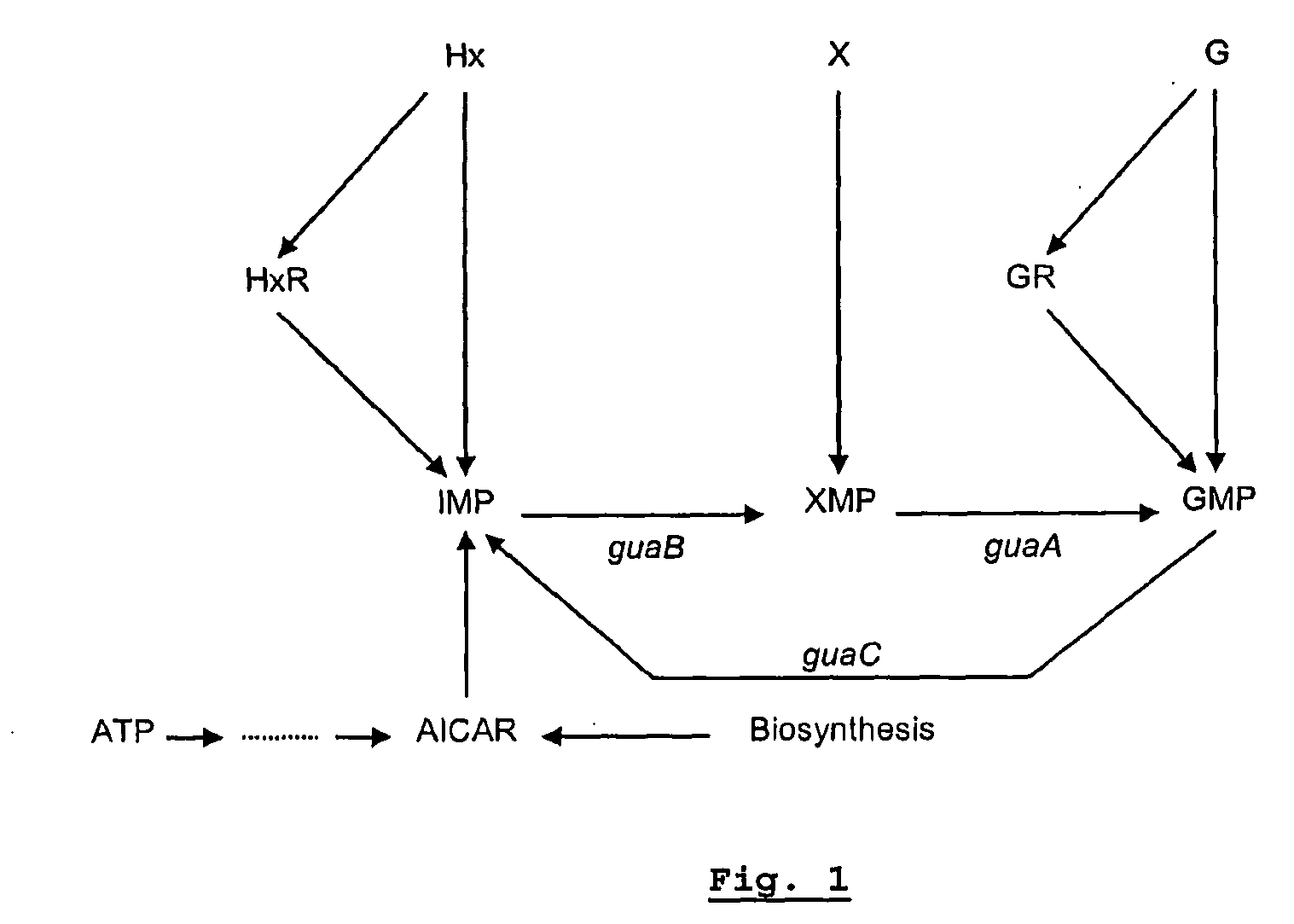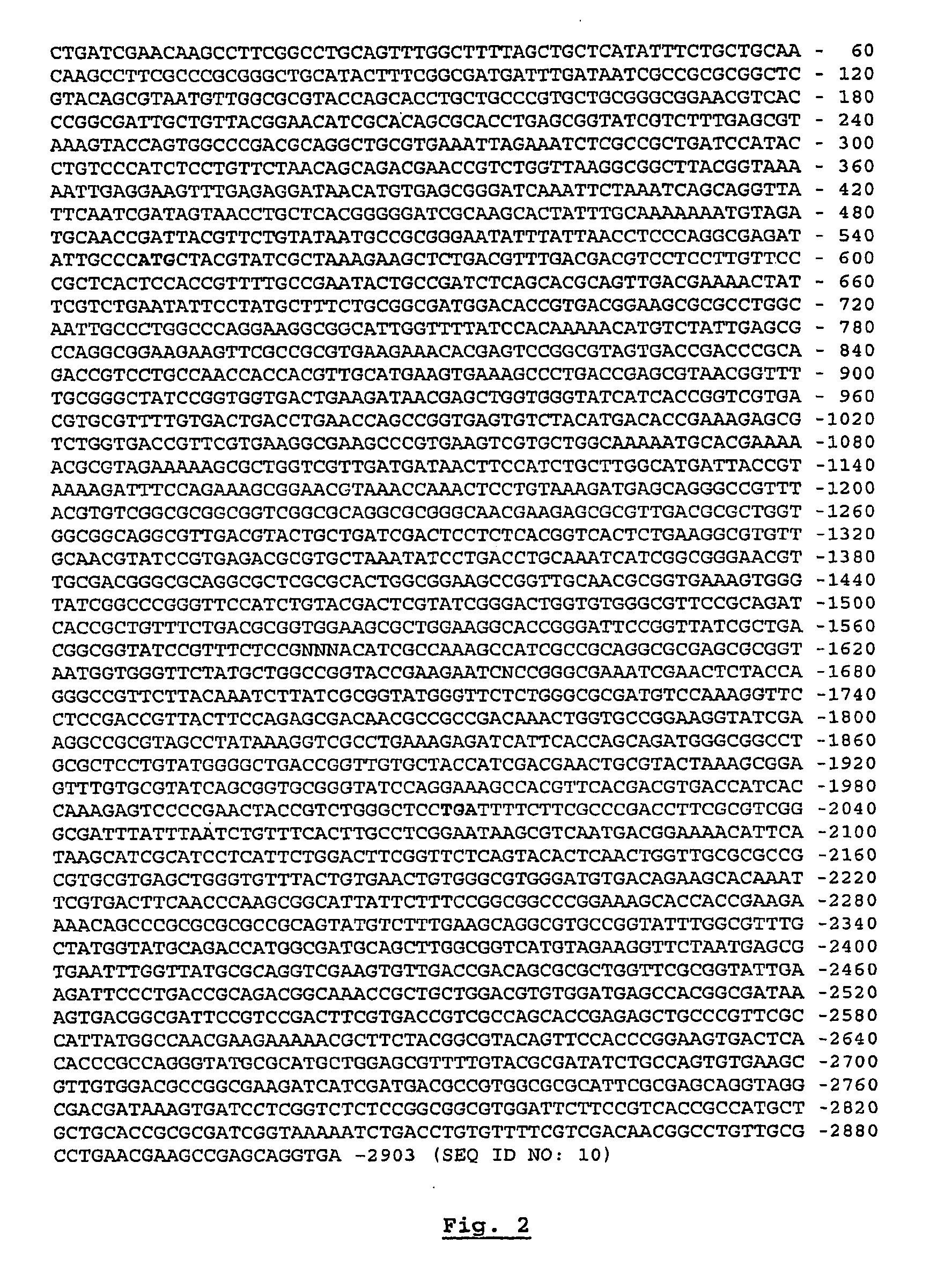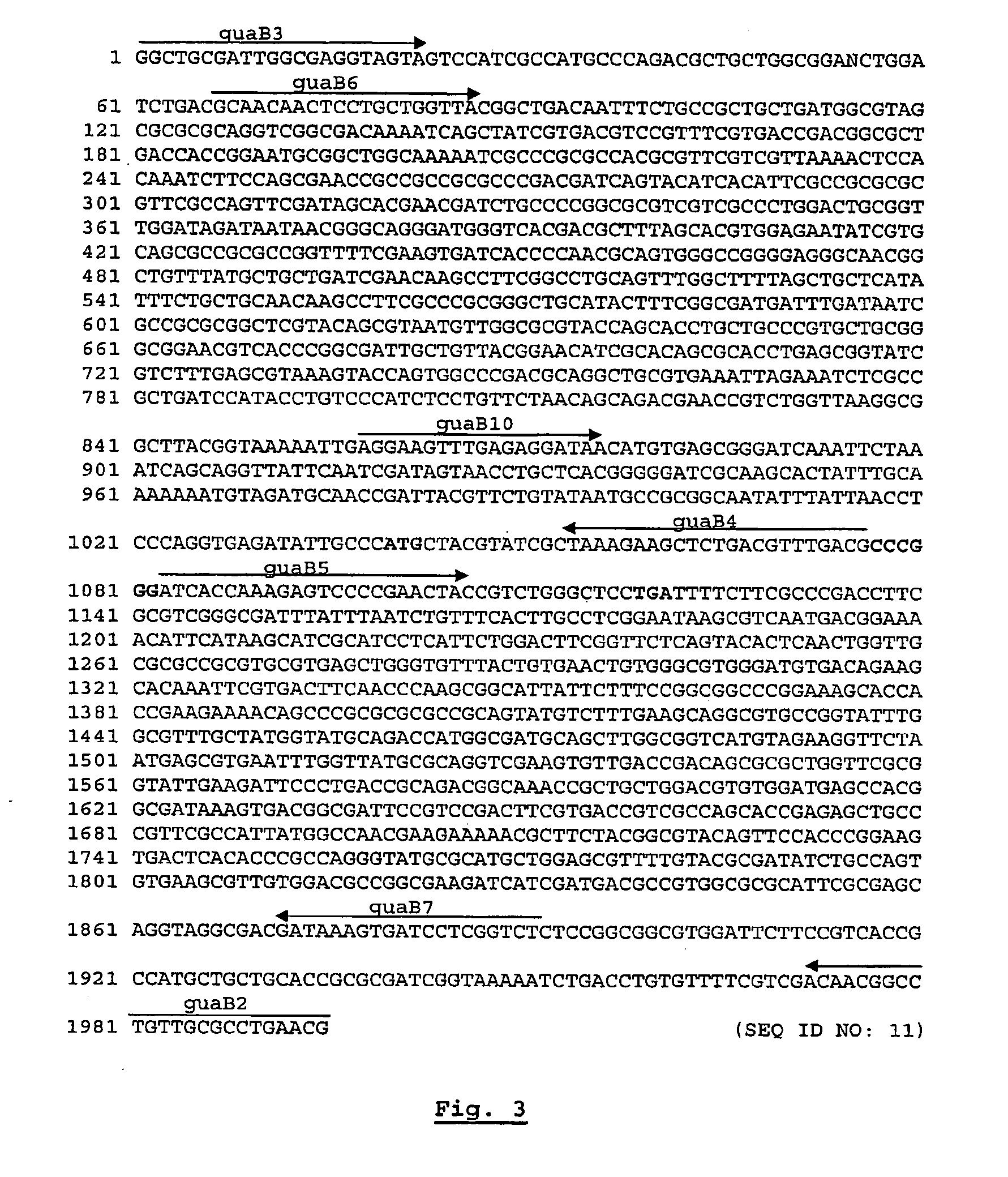Live attenuated salmonella vaccine
a live attenuated, salmonella technology, applied in the direction of antibacterial agents, pharmaceutical active ingredients, antibacterial agents, etc., can solve the problems of salmonellosis inactivation vaccines in general, inability to easily identify contaminated food, and inability to control the disease in natur
- Summary
- Abstract
- Description
- Claims
- Application Information
AI Technical Summary
Benefits of technology
Problems solved by technology
Method used
Image
Examples
example 1
Auxotrophic Mutation Affects the guaB Gene
[0076]An auxotrophic insertion mutant of a wild type S. Enteritidis was obtained via insertion mutagenesis. Only when supplemented with 0.3 mM guanine, xanthine, guanosine or xanthosine could the mutant strain grow on Minimal A medium.
[0077]These data strongly suggest that the auxotrophic mutation of the strain affects the guaB gene, encoding the enzyme IMP dehydrogenase (EC 1.1.1.205). This enzyme converts inosine-5′-monophosphate (IMP) into xanthosine monophosphate (XMP) as indicated in FIG. 1.
[0078]An insertion mutant can revert, thereby restoring the pathogenicity of the strain. This limits its applicability in a live attenuated vaccine. In that aspect deletion mutants are preferred. guaB deletion mutants of S. Enteritidis and S. Typhimurium were therefore created and tested. The guaB genes of both serovars are given in FIGS. 2 and 5.
example 2
guaB Deletion Mutants
[0079]Construction of guaB Deletion Mutants
[0080]guaB deletion mutants were created according to the method for generating deletion mutations in the genome of Escherichia coli K12 (Datsenko and Wanner, 2000, PNAS 97:6640-5, incorporated by reference herein).
[0081]This method relies on homologous recombination, mediated by the bacteriophage λ Red recombinase system, of a linear DNA fragment generated by PCR.
[0082]The guaB sequence is hereby substituted by an antibiotic resistance gene. This resistance gene is flanked by FRT sites (FLP recognition target sites) and can be excised from the genome by site-specific recombination, mediated by the FLP recombinase.
[0083]Overlap PCR (Ho et al., 1989, Gene 77:51-59) was applied to construct a linear fragment. The principle relies on the use of two primer sets, one upstream pair (GuaB3-GuaB4; GuaB3: 5′ GGCTGCGATT GGCGAGGTAG TA 3′, SEQ ID NO 2; GuaB4: 5′ GGTGATCCCG GGCGTCAAAC GTCAGGGCTT CTTTA 3′, SEQ ID NO 3) and one downst...
PUM
| Property | Measurement | Unit |
|---|---|---|
| pH | aaaaa | aaaaa |
| weight | aaaaa | aaaaa |
| pH | aaaaa | aaaaa |
Abstract
Description
Claims
Application Information
 Login to View More
Login to View More - R&D
- Intellectual Property
- Life Sciences
- Materials
- Tech Scout
- Unparalleled Data Quality
- Higher Quality Content
- 60% Fewer Hallucinations
Browse by: Latest US Patents, China's latest patents, Technical Efficacy Thesaurus, Application Domain, Technology Topic, Popular Technical Reports.
© 2025 PatSnap. All rights reserved.Legal|Privacy policy|Modern Slavery Act Transparency Statement|Sitemap|About US| Contact US: help@patsnap.com



